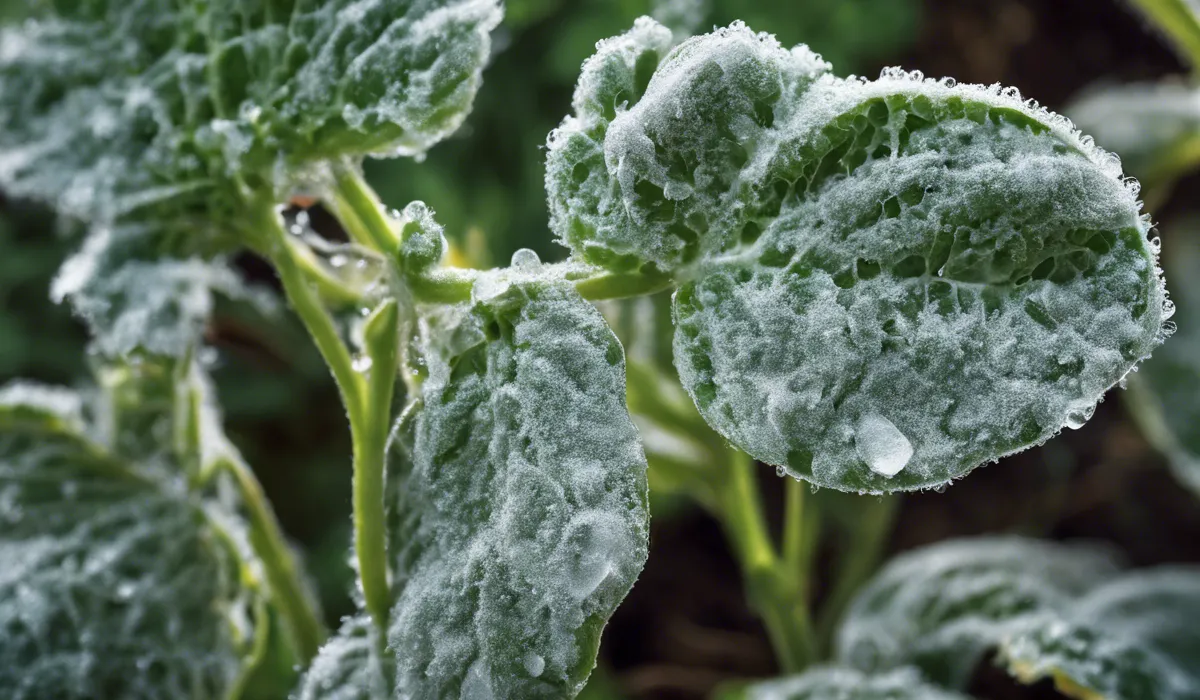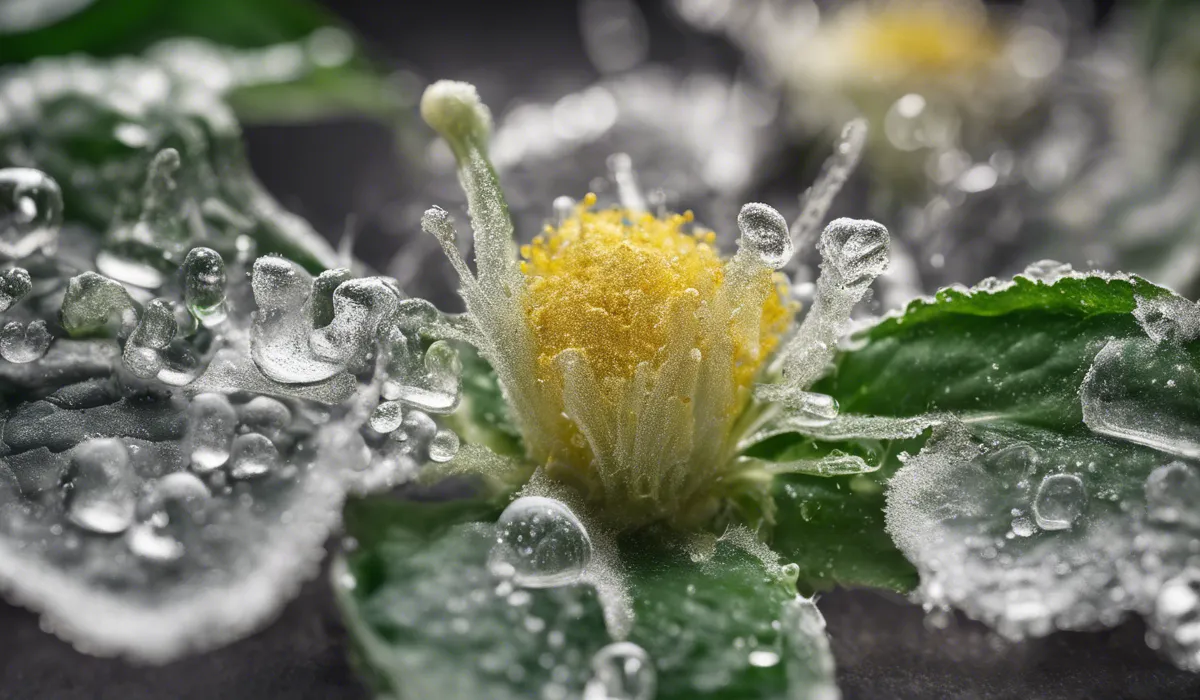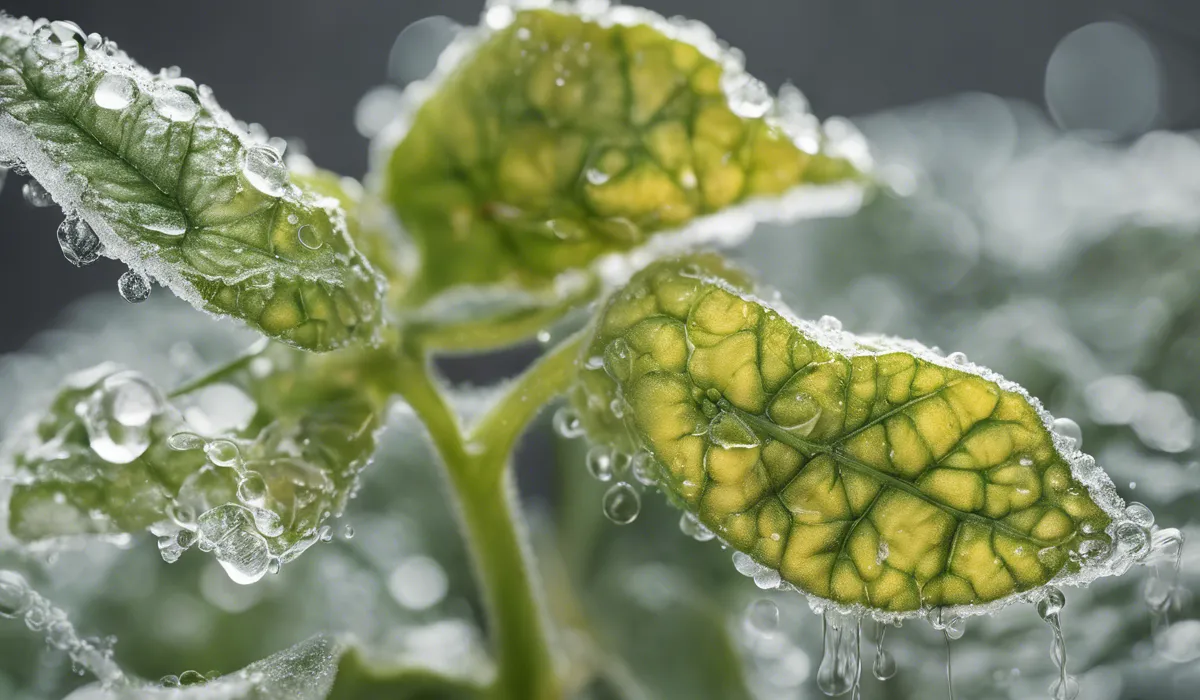Mix 1-2 teaspoons of potassium bicarbonate with a gallon of water. Spray the solution on both sides of plant leaves affected by powdery mildew. Repeat weekly, or as needed, to prevent the fungal disease’s spread. Avoid application during peak sunlight to reduce leaf burn risk.
Powdery Mildew and Potassium Bicarbonate

What is Powdery Mildew?
Powdery mildew is a common fungal disease that affects a wide range of plants. It is characterized by white or gray powdery spots on the leaves and stems of plants.
The fungus thrives in warm, dry climates and can spread rapidly if not controlled. Powdery mildew weakens plants by disrupting photosynthesis, leading to stunted growth and reduced yields.
Identifying Symptoms of Powdery Mildew
Early identification is key to managing powdery mildew. Symptoms include white powdery spots on the upper surface of leaves, distorted or twisted foliage, and yellowing or drying of infected areas. If left unchecked, it can lead to leaf drop and plant death.
Introduction to Potassium Bicarbonate as a Treatment
Potassium bicarbonate is an effective, eco-friendly fungicide used to combat powdery mildew.
It works by creating an alkaline environment on the leaf surface, which is inhospitable to the growth of the fungus.
Advantages of Using Potassium Bicarbonate
Using potassium bicarbonate has several benefits. It is a safe alternative to harsh chemicals, is easy to use, and is effective at not only treating but also preventing powdery mildew.
It can also improve the overall health of the plants by providing them with potassium, an essential nutrient.
Preparing the Potassium Bicarbonate Solution

Gathering Materials and Safety Tips
Before mixing your solution, gather all necessary materials including potassium bicarbonate, water, a measuring spoon, a spray bottle or garden sprayer, and protective gloves.
Always wear gloves when handling the mixture to prevent skin irritation.
Mixing the Correct Concentration
To prepare the solution, mix 1-2 teaspoons of potassium bicarbonate with a gallon of water.
It’s important to use the correct concentration to avoid damaging the plants. Dissolve the potassium bicarbonate thoroughly in the water to ensure an even application.
Creating an Effective Solution
For the solution to be most effective, it should be freshly mixed and used promptly. If you’re dealing with a severe infestation, consider adding a few drops of liquid soap to help the solution adhere to the leaves better.
Application and Maintenance

How to Apply the Solution?
When applying the potassium bicarbonate solution, ensure thorough coverage. Spray the solution on both sides of the leaves and on any affected stems.
Do this early in the morning or late in the evening to minimize the risk of leaf burn.
Timing and Frequency of Application
For best results, apply the solution weekly, or as needed, to keep powdery mildew at bay. Consistency is key to preventing the spread of the disease.
Preventing Powdery Mildew in the Future
To prevent powdery mildew, ensure good air circulation around your plants, avoid overhead watering, and remove any infected plant debris from your garden.
Regular monitoring and maintenance, coupled with timely application of potassium bicarbonate, can keep your plants healthy and free of powdery mildew.
In summary, by understanding and identifying powdery mildew early, preparing a proper potassium bicarbonate solution, and applying it consistently with good garden maintenance practices, you can protect your plants from this common fungal threat.
With these steps, your garden can thrive, providing lush foliage and abundant harvests.
FAQs About Using Potassium Bicarbonate for Powdery Mildew
How do I prepare a potassium bicarbonate solution for treating powdery mildew?
Mix 1-2 teaspoons of potassium bicarbonate with a gallon of water to create the treatment solution.
What is the correct way to apply potassium bicarbonate on plants?
Spray the potassium bicarbonate solution on both sides of the leaves of the affected plant to ensure thorough coverage.
How often should I apply the potassium bicarbonate solution for best results?
Apply the solution weekly, or as needed, to effectively prevent the spread of powdery mildew.
When is the best time to spray plants with the potassium bicarbonate solution?
It is best to spray plants with the solution when they are not in direct sunlight to reduce the risk of leaf burn.
Can potassium bicarbonate be used as a preventive measure against powdery mildew?
Yes, regular application of the potassium bicarbonate solution can help prevent the onset and spread of powdery mildew on plants.
Final Thoughts
To combat powdery mildew, dissolve 1-2 teaspoons of potassium bicarbonate in a gallon of water. Thoroughly spray this mixture on both sides of the afflicted plant leaves.
For effective management of the fungus, apply this treatment weekly or as necessary. To minimize the chance of leaf burn, do not spray during the intense midday sun.
